周波:中国已经主导西太平洋了吗?
导读:近日,英国对华关系全国委员会(UKNCC)邀请国防部国际军事合作办公室安全合作中心前主任、中国前驻纳米比亚国防武官、清华大学战略与安全研究中心研究员、中国论坛特约专家周波,和英国驻华使馆前武官何儒博(Rupert Hollins)海军准将,以《中国已经主导西太平洋了吗?》为同一主题,分别撰写评论,并在其官网“客座撰稿人”栏目,以对话形式发布。 周波认为,全球化的中国不需要在任何地方寻求主导地位。相反,中国需要全球化思维,承担大国责任,展现大国应有的担当。北京日前宣布申请加入《全面与进步跨太平洋伙伴关系协定》(CPTPP),看起来更像是多边主义的坚定领导者。 何儒博则认为,中国的崛起是各国积极调整其印太战略的根本原因。中国希望美国可以让出西太平洋地区(甚至整个亚太地区)的军事主导权,连同其在全球范围内的领导力。但是美国却已开始重振旗鼓。《2021美国创新和竞争法》(US Innovation and Competition Act 2021)便是美国四年来通过跨部门、全政府手段应对中国构成的挑战的最新补充。 中国论坛特翻译两篇评论全文,以飨读者。
【文/周波】
1999年,时任伦敦国际战略研究所研究室主任的西格尔(Gerald Segal)在《外交事务》发表了一篇题为《中国重要吗?》的文章,引发了一场轩然大波。谈及中国的经济、政治和战略问题的方方面面,他最终得出的结论是——中国的重要性被严重夸大了。在西格尔先生看来,中国只是一个“对世界无关紧要的小市场,特别是对亚洲之外的地区”。
二十多年后的今天,西格尔先生想必正在坟墓里辗转反侧,眼巴巴看着当年的观点让自己沦为笑柄。今天的中国不但不是“一个小市场”,反而变成了世界上最大的零售市场、消费市场、电子商务市场、奢侈品市场,甚至新车市场。同时,中国也是最大的贸易国、最大的工业国和最大的出口国,以及约130个国家的最大贸易伙伴。过去的四十年里,中国的发展突飞猛进,势不可挡,亚洲金融危机、特朗普对华贸易战等各种挑战都无法阻挡其前进的步伐。
如今新冠病毒全球肆虐,然而中国就像是这场全球风暴的台风眼,是地球上最安全的避风港。中国虽然第一个受到疫情影响,但也第一个从疫情中恢复,成为2020年全球唯一实现经济正增长的国家。
同时,中国向他国提供援助。截至6月底,中国已向约100个国家提供4.5亿剂疫苗。
但是,无论这些数据多么惊人,得出21世纪会是“中国主导的世界秩序”的结论是不可取的。事实上,即使在中国的大本营东亚地区,中国也尚未取得完全的主导地位。

辽宁号航母编队/资料图来自中国军网
对比拥有共同文化和宗教渊源的欧洲,亚洲自一开始就充满了多样性,具有各自独特的地理特征、多元的文化与宗教习俗。尽管过去的数个世纪,中国人自视是世界的文化、政治与经济中心,君主有权统治“天下”,但中国从未试图统治整个东亚。明清两代皇帝想要的不过是藩属国对中华帝国的臣服与朝贡。
中国在东亚的经济主导地位是毋庸置疑的。2010年8月,中国超过日本成为世界第二大经济体。据英国经济与商业研究中心(CEBR)预测,到2028年,中国将取代美国成为世界第一大经济体。
作为历史上最大的贸易集团,RCEP(《区域全面经济伙伴关系协定》)的成员国约占世界人口的30%,GDP规模占全球经济总量的30%,但是美国却缺席了该协定。而就在RCEP签署几天后,中国表示积极考虑加入《全面与进步跨太平洋伙伴关系协定》(CPTPP),北京看起来更像是多边主义的坚定领导者。
东亚不会以中国为中心。虽然有“大中华”的说法,其包括中国大陆、香港、澳门和台湾,有时还包括新加坡,但没有迹象表明中国人希望输出他们的意识形态或发展模式。
如果一国的势力范围意味着其在本地区拥有一定程度的文化、经济、军事或政治排他性,并且其他国家表示遵从,那么仔细观察就会发现,东亚并不像是中国的势力范围。尽管中国反对,朝鲜还是执意发展核武器。日本、韩国和泰国又都是美国的盟友。
部分东盟国家与中国在南海也存在领土争端,包括越南、菲律宾、马来西亚、文莱等。
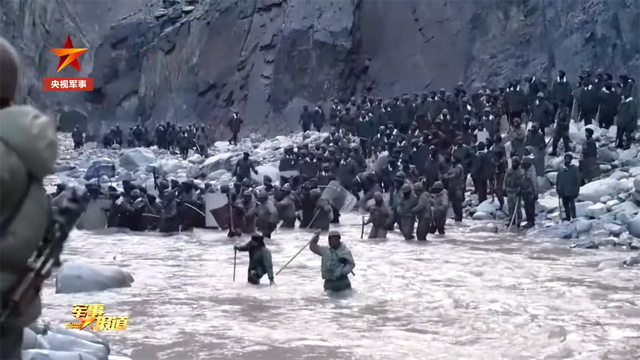
中印万河谷冲突 截图来自央视
不断崛起的中国会使世界变得更美好吗?这是21世纪的终极问题。即使是那些对中国最挑剔的人也无法否认,过去四十年中国的崛起是和平的—这是罕见的大国崛起。中国自1979年改革开放以来就没有发生过战争。
因此,2020年6月中印边界地区加勒万河谷斗殴事件是极不寻常和令人遗憾的,该冲突造成20名印度军人和4名中国军人死亡,以至于印度外交部长苏杰生表示,双边信任“受到严重干扰”。
但是,双方军队均选择用拳头和木棍这样石器时代的斗殴方式,说明他们明白无论如何都不能打破默契,向对方开枪。
从这个意义上说,成熟和理性仍然占主导。随着中印军队撤出各自声称属于自己的边境地区,并建立了一段缓冲区,局势已经有所缓和。希望两国政府能从这次致命斗殴事件中吸取教训,寻找加强彼此信任的新方法,比如在两军之间建立热线电话。
东亚地区的真正挑战并非中国如何和邻国打交道——数千年的历史接触已经让他们学会如何交往相处——而是中国如何和美国共存。作为非西太平洋国家,美国却自称是“自由开放的印太地区”的守护者。中国怀疑美国想将中国的影响力遏制在西太平洋内,而美国怀疑逐渐强大的中国正试图将其赶出该地区。展望未来,特朗普政府发起的大国竞争只会变得更加激烈。
问题在于大国竞争是否会让彼此陷入双方都不想看到的对抗。
回顾冷战这段历史,北京和华盛顿之间难以降低冲突风险有两个原因。首先,在冷战期间,华盛顿和莫斯科各自势力范围泾渭分明,这使它们能够避免直接对抗。但中美之间甚至连缓冲区都没有。如今,美国海军舰艇经常在南海和台湾海峡的中国岛礁附近海域航行。
其次,美国和苏联通过相互确保摧毁保持势力平衡。这一点不存在于北京和华盛顿之间。但在西太平洋,由于中国人民解放军几十年的发展进步,中美军事实力差距正在缩小,对中国越来越有利。因此,华盛顿扩大东亚军事投资,并呼吁其全球盟友和伙伴联合起来对付中国。这些行为反倒会激怒北京,使局势变得更加动荡。
美国无法保证与中国在第一岛链的军事冲突中稳赢,第一岛链从日本延伸到菲律宾和中国南海。但是如果美国输了,其影响将产生多米诺骨牌效应:美国将失去在该地区盟友和伙伴的心中的威望和信誉;联盟将分崩离析,美国不得不收拾行囊,打道回府。
尽管中国缺少全球军事基地,其全球影响力已经彰显,特别是通过“一带一路”等大型项目。“一带一路”是人类历史上规模最大的基础设施项目。全球化的中国不需要在任何地方寻求主导地位。相反,它需要全球化思维,承担大国责任,展现大国应有的担当。
【文/何儒博】
中国梦
为了实现中华民族伟大复兴的中国梦,中国确立了“两个一百年”的奋斗目标。也就是在中国共产党成立100年时(2021年)全面建成小康社会,在新中国成立100年时(2049年)建成富强、民主、文明、和谐的社会主义现代化国家。中华民族近代以来最伟大梦想的实现彰显了中国的综合国力,涵盖政治、外交、经济、贸易、科技、金融科技、信息化和数字化、网络空间安全、创新以及军事。事实上,中国在上述领域已经对世界产生了举足轻重的影响。
新时代的中国强军梦
中国人民解放军是一支听党指挥的人民军队,有望成为世界一流的军队。军事力量的强大离不开国家强盛,同时也是保证国家强盛的前提。习近平主席认为,强国需要强军,军强才能国安,两者相辅相成。如今,中国的经济实力为中国军队的全面改革和现代化提供了强有力的支撑。其目标是:到2049年建成“世界一流的武装力量”。在国家主导、国家补贴的战略下,例如军民融合(Military-Civil Fusion),以及人工智能(AI)、量子技术、新兴和颠覆性技术的进步,将加速实现该目标。

国庆70周年阅兵,装备方队通过天安门广场。图自新华社
首要地位的势力范围
中国表示永远不会成为世界霸主。传统分析认为中国的雄心至少是寻求一个地区的主导地位和全球领导地位——换句话说,是以亚太地区为中心的主导地位并成为更具包容性的全球领导者。我们可以把这个问题暂时搁置,站在中国的立场想象一下,西太平洋的军事梦想会是什么样子。
中国强军梦的涵义
令中国不悦的是,西太平洋地区被划分为中国经济势力范围和美国安全势力范围。美国印太司令部有37.7万多名军事和文职人员。驻日美军有54000名军事人员,以及美国驻韩国部队有28500人。
对中国来说,一个“美梦”可能是美国从国际日期变更线东部撤军,终止在该地区的防御协议,不对台湾提供援助,停止近距离侦察飞行,停止在南海的航行自由行动。届时,随着美国的退出,美国的合作伙伴和盟友慢慢解散。该地区内的其他国家也无法干预中国对基于本国利益的追求,特别是在东海和南海区域。
梦想而非现实
这个梦想还没有成为现实。美国仍处在该地区军事平衡的优势地位。美国的国防预算约为中国的三倍。尽管这一优势被中国较低的军事成本削弱了,尤其是在军事工资、表外资金和对其他国家没有帮助的研发捷径方面。中国说“中国人民解放军仍然远远落后于世界领先的军队”,实际上是指美国的军队,这不是在撒谎。以远征能力为例,中国仍在努力打造航母战斗群、两栖特遣部队、战略空运、中途加油飞机和可以向全球投放军力的“战略重点枢纽”。而美国运作这些远征军事力量,以及具有前沿的和可持续作战能力的陆军、舰队、海军陆战队远征军和空军已经有几十年了。
逐步实现梦想
中国正在稳步实现其战略目标。在质量上,中国的舰船、综合防空系统、巡航导弹、弹道导弹都处于世界领先的地位。在作战能力上,中美的核力量和弹道导弹防御系统正处于一个“刺激-反应”、轮流主导的循环之中。
在可部署的投射能力上,美国太平洋司令部(USPACOM)在西太平洋地区正感受到来自中国的压力。2020年7月,美国空军太平洋司令部副司令预测,与美国印度洋-太平洋司令部(INDOPACOM)的指定部队(而非美国全部军队)相比,中国军队在军事实力上更胜一筹。他表示,中国在第一岛链(北起千岛群岛、日本列岛、琉球群岛、台湾岛、菲律宾北部群岛、巴拉望岛、婆罗洲,最终南北向分布在越南附近)内拥有“主场优势”。2021年3月,因担心当前局势会带来不利于美方的军事平衡,美国印太司令部司令称,美国需要在军备数量和质量上“重新获得优势”。他说,“美国的辉煌始于关岛”,但他其实可以再补充一句,“我不希望辉煌就此终结”。
行使主导权
中国处理中美关系的基本模式是“不冲突,不对抗,互相尊重,互利共赢”。接下来我们也有可能看到中国像《孙子兵法》中所描述的那样,不战而胜。真正强大的部队有打赢战争的军事实力,但却可以做到“不战而屈人之兵”。即使是不动用军事力量,中国也在积极调用其他体现其国力的手段来实现自己的安全目标。
中国以在不引发武装冲突的情况下实现目标见长:立场坚决强硬,却不见开火。这种非常规冲突形式现如今被广泛称为“灰色地带(grey zone)”行动。中国的南海公共外交策略就是一个很好的示例。相比起通过部署舰身为黑色的海军军舰以达到威慑效果,中国派遣了舰身为白色的海警(China Coast Guard)和乘坐相似蓝色拖网渔船的海上民兵。后者本是和平时期海上执法的象征,但实质上,这都是属于中国的武装力量。双方一旦爆发冲突,局势就会变得险象环生。受制于地理条件,美国的在武力选项上会十分被动,而中国军队则会有很大的地利之便。中国的反介入/区域拒止(Anti-Access and Area Denial,A2AD)战略始终将美国协防台湾的军事力量视为重点。该战略防御圈的影响范围现已扩展至第二岛链(从东京起经过关岛和帕劳,再到印度尼西亚的伊里安查亚)。
中国的弹道导弹命名充满了“杀气”,专门狙杀航母的DF21D被称作“航母杀手”,能对关岛基地精准打击的中远程弹道导弹DF26被命名为“关岛杀手”。台湾是中美之间最容易爆发的冲突点,同时也是检验两国在西太平洋地区军事主导权的重要地域。不论是中国“武统”台湾失败,抑或是美国的军事介入失败,都会在战略上产生严重的后果。
众所周知,反对两栖登陆是非常困难的,在一直在为这个做准备的台湾也是如此。中国用短程弹道导弹发射常规弹头和核弹头到台湾只用6到8分钟,但这只会为占领军留下一片混乱和愤怒的人群。一旦战斗开始,把它遏制到局部战争是不太可能的。两个核超级大国防止事态升级到其本土的下坡路可能很难找到。中国领导层是理性的,会计算风险。大多数政策声明都强调“和平统一”。
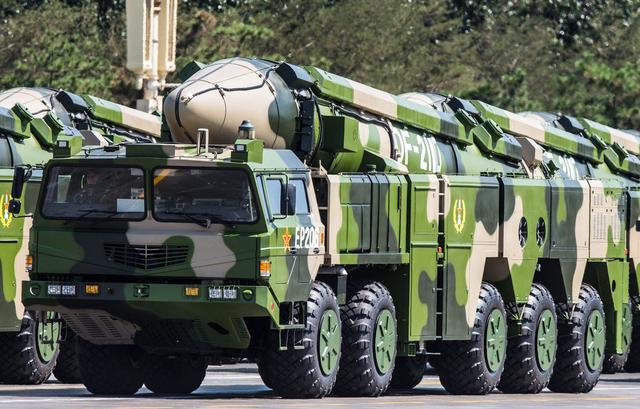
中国弹道导弹DF21D 图自新华社
美梦的终结或是变成噩梦
未来中国在西太平洋地区的战略规划很有可能会被打断,或是直接被粉碎。如果美国失去了在西太平洋的军事主导地位,那么日本便可能重新增强其军事力量,继而演进成为一个核大国。朝鲜半岛的统一与无核化可能会对中国不利。而当前的国际环境与国际形势对中国而言远没有看上去那么简单。中国将这归咎于美国。美国、欧盟、德国和法国都有各自的印太战略。英国也在2021年最新的《安全、防务、发展和外交政策综合评估报告》中宣布了其重点倾向印太地区的安全政策。同时,印度、日本和澳大利亚也正在调整适应当前印太地区的战略发展前景。
中国的崛起是各国积极调整其印太战略的根本原因。北约(NATO)称中国对国际秩序构成了“系统性挑战”;欧盟将中国定位为“合作伙伴、谈判伙伴、经济竞争者和制度性对手”;七国集团呼吁各国单方面采取行动改变现状,缓解由中国崛起造成的地区紧张局势。当然,美国也绝不会在一旁坐视不管。最新通过的《2021美国创新和竞争法》(US Innovation and Competition Act 2021)便是美国四年来通过跨部门、全政府手段应对中国构成的挑战的最新补充。
调换指挥棒与杀手锏?
中国的宏大叙事总体上是从历史决定论的态度强调“东方崛起,西方衰落”。中国希望美国可以让出西太平洋地区(甚至整个亚太地区)的军事主导权,连同其在全球范围内的领导力。但是美国却已开始重振旗鼓。“太平洋威慑倡议”着重强调了美国的军事主导地位。但如果以上计划无法奏效,中国在将来获得了西太平洋地区的军事主导权,那么手握指挥棒的中国将需要放弃其杀手锏。杀手锏是弱小的军事力量用极为不对称的方式来战胜实力更强一方所 依靠的工具。当前美国军队分布零散,部署灵活,比以往更具活力与杀伤力,如果美国可以聚焦当前与中国的战略竞争,重新调整其军事投入,重建能有效投射的军力,那么这支军队很有可能成为美国将来的“杀手锏”。
(翻译:中国论坛/汤卓筠;校译:中国论坛/许馨匀、韩桦)
翻页查看英文原文
Is China’s primacy over the Western Pacific already a reality?
【Zhou Bo】
In 1999, Gerald Segal, then Director of Research at the International Institute of Strategic Studies, made a considerable splash with his essay “Does China matter?” in Foreign Affairs. Touching upon the economic, political and strategic issue of China, his overall conclusion was that China’s importance had been greatly exaggerated. For Mr Segal, China is but a small market ‘that matters little to the world, especially outside Asia’.
Two decades later, Mr Segal must be turning in his grave to see how his argument has made him a laughing stock. Rather than “a small market", China is now the largest retail market, consumer market, e-commerce market, luxury goods market and even new car market in the world. It is also the largest trading nation, industrial nation and the largest exporter in the world and the largest trading partner to around 130 countries. In the last four decades, no challenges have seemed able to stop China’s advance by leaps and bounds, be it the Asian financial crisis or Trump’s trade war with China, for instance.
Amid the ravaging pandemic, China looks like the eye of global storm, the safest haven on earth. It was the first to suffer from the pandemic, but also the first to recover from it, being the only country to have registered economic growth in 2020.
It is helping others, too. By the end of June, China has provided 450 million doses of its vaccines to nearly 100 countries.
However impressive these facts might be, it is wrong to conclude that the 21st century will be Pax Sinica. In fact, even in East Asia, China’s home ground, China’s primacy is not fully evident.
By contrast with Europe that is bound together by a common culture and religion, Asia has been diversified and pluralistic from day one with distinctive geographies, diversified cultures and religions. No matter how in centuries past, the Chinese thought China was the cultural, political or economic centre of the world and their sovereign had a right to rule “all under Heaven,” China never attempted to control the whole of East Asia. Deference to the Middle Kingdom and exotic gifts from tributary states were all that the Ming and Qing emperors wanted.
There is no doubt about China’s economic primacy in East Asia. In August 2010, China overtook Japan as the world’s second largest economy. According to the UK-based Centre for Economics and Business Research (CEBR), China will overtake the US to become the world’s largest economy by 2028.
With the US absent from RCEP- Regional Comprehensive Economic Partnership, the biggest trade bloc in history that accounts for about 30% of the world’s population and 30% of global GDP-and with China’s expressed interest in joining the Comprehensive Progressive Trans-Pacific Partnership (CPTPP) just days after RCEP’s conclusion, Beijing looks a firm leader in multilateralism.
East Asia won’t be Sino-centric. Even if there is talk of a “Greater China” that encompasses mainland China, Hong Kong, Macau, and Taiwan and sometimes Singapore, there are no signs that the Chinese wish to export their ideological or development model.
If a sphere of influence means that a state has a level of cultural, economic, military, or political exclusivity in a region in which other states show deference to the power, then East Asia won’t look like China’s sphere of influence under scrutiny. DPRK has anyway developed nuclear weapons anyway despite China’s disapproval. Japan, Republic of Korea and Thailand are American allies.
Some ASEAN countries such as Vietnam, the Philippines and Malaysia and Brunei have territorial disputes with China in the South China Sea.
Would an ever-rising China make the world a better place? This is the ultimate question for the 21st century. Even those most critical of China cannot deny that China’s rise in the last four decades is peaceful -a rare phenomenon for any rising power. China has no war since its reform and opening up in 1979.
Therefore, the brawl resulting in the deaths of 20 Indian soldiers and four Chinese servicemen in the Galwan Valley in the border areas between China and India in June 2020 was most unusual and unfortunate, to the extent that Indian External Affairs Minister Subrahmanyam Jaishankar said that bilateral trust was “profoundly disturbed”.
But the fact that the two troops chose to use fists and wooden clubs to fight in a stone-age manner showed they knew they should not shoot at each other under any circumstances to violate a tacit agreement.
In this regard, a kind of maturity and rationality still prevailed. Since the Chinese and Indian troops have withdrawn from the border areas that each claimed to be its own and a de facto buffer zone established, the situation has de-escalated. Hopefully, the deadly brawl will provide useful lessons for the two governments in finding out new ways to enhance confidence-building, such as setting up a hotline between the border troops.
The real challenge in East Asia is not how China will deal with its neighbours and vice versa - they know how to deal with each other through thousands of years of historical engagement. It is how China might coexist with the US, a non-Western Pacific nation but a self- claimed guardian of the “free and open Indo-Pacific”. China suspects the US wants to confine Chinese influence within the Western Pacific while the United States suspects a stronger China is trying to drive it out of the region. Looking down the road, the great power competition initiated by the Trump administration will only become more fierce in days to come.
The question is whether competition will slide into a confrontation that neither wants.
Risk reduction for Beijing and Washington is difficult for two reasons if one looks into the history of the Cold War. First, during the Cold War, there were clearly separate spheres of influence dominated by Washington and Moscow that allowed them to avoid direct confrontations. But between China and the United States, there isn’t even a buffer zone. Nowadays American naval vessels regularly sail through the waters off Chinese islands and rocks in the South China Sea and the Taiwan Strait.
Second, the United States and the Soviet Union were balanced by mutually assured destruction. This is not found between Beijing and Washington. But in the Western Pacific, the gap in military strength is shrinking in China’s favour thanks to the advances of the PLA in the past decades. As a result, Washington is investing more militarily in the region and calling on its global allies and partners to gang up on China. This in turn would irk Beijing and make the situation more volatile.
There is no guarantee the US would win in a military conflict with China in the first island chain that stretches from Japan to the Philippines and the South China Sea. But should it lose, the consequence would be a domino effect: The US would lose prestige and credibility among its allies and partners in the region; The alliance would fall apart and it would have to pack and go home.
Short of global military presence though, China’s influence is already felt worldwide, especially through such mega-projects as the Belt & Road Initiative which is the largest project on infrastructure in human history. A global China doesn’t need to seek dominance anywhere. Instead, it needs to think globally and act responsibly in line with the great responsibility that is intrinsically associated with great powers.
【Rupert Hollins】
A Dream
The Chinese Dream of national rejuvenation has two centennial goals. The Communist Party’s centenary was on 1st July. New China’s foundation centenary is in 2049. This should be the apotheosis of China as a great power, exercising comprehensive national strength – political, diplomatic, economic, trade, tech, fintech, information and digital, cyber and space, innovation; and military, too. China is already impacting the world in all these dimensions.
Dreaming with Chinese Military Characteristics
The People’s Liberation Army, ever the Party’s army, now has a global mandate. Military might is both byproduct of, and pre-condition to, national greatness. For President Xi, a strong country and strong military go together.
China’s economic power underwrites wholesale reform and modernisation of its armed forces. The aim: by 2049 to have “world-class armed forces”. State-directed, state-subsidised, strategies such as Military-Civil Fusion, and advances in AI, quantum technologies, new, emerging and disruptive technologies will speed it there.
Sphere of Primacy
China says it will never be a world hegemon. Conventional analysis of China’s ambitions is that it seeks at least a regional primacy and global leadership - in other words, dominance centred on Asia-Pacific and a global leadership a little more accommodating. We can leave this as a moot point for now. Let’s imagine, in China’s shoes, what the military dream might look like in the Western Pacific.
The Meaning of the Dream
It irks China that its region is divided between a Chinese economic and a US security sphere of influence. US Indo-Pacific Command has over 377,000 military and civilian personnel. US Forces Japan number 54,000 military personnel, US Forces in South Korea 28,500.
A ‘good’ dream for China might look like withdrawal of US forces east of the International Date Line, the end of US defence agreements in the region, no assistance to Taiwan, cessation of closein reconnaissance flights, and the halting freedom of navigation operations (FONOPs) in the South China Sea. With the US out, its partners and allies melt away, and regional states are powerless to resist China’s pursuit of national interests, especially in the East and South China Seas.
Dream, Not Yet Reality
That dream is not yet reality. The military balance is still in the US’s favour. Its defence budget is about three times China’s, though that advantage is attenuated by China’s lower costs, especially for military wages, offbalance-sheet funding and shortcuts in research and development unhelpful to other states. China is not fibbing when it says the “PLA still lags far behind the world’s leading militaries”, by which it really means the US. One example, take expeditionary capability. China is still working on Carrier Strike Groups, Amphibious Task Forces, strategic air lift, refuelling assets and “strategic strongpoints” from which to project power globally. Whereas the US for decades has operated with these capabilities, and forward-positioned and sustained armies, fleets, marine expeditionary forces and air forces.
Realizing the Dream
China is steadily realising its dream. On quality, Chinese shipbuilding, integrated air defence systems and cruise and ballistic missiles are already top-notch. On capability, Chinese and US nuclear forces and ballistic missile defences are in an action-reaction cycle for dominance.
On deployable power projection, USPACOM is feeling Chinese push-back in the Western Pacific. In July 2020, USAF Deputy Commander USPACOM predicted Chinese military overmatch compared to INDOPACOM’s assigned (not all US) forces. He said China has “home field advantage” within the first island chain (Kuril Islands, main Japanese archipelago, Ryukyu Islands, Taiwan, northern Philippines archipelago and Palawan, Borneo and bending up to Vietnam). In March 2021 Commander INDOPACOM, worried about an unfavourable military balance, said the US needed to “regain the advantage” quantitatively and qualitatively. “America’s day begins in Guam”, he said. He could have added he does not want it to end there.
Exercising Primacy
China’s formula for a relationship with the US is “no conflict, no confrontation, mutual respect and win-win cooperation”. We would expect China to use Sun Tzu strategy to win without fighting. A strong military, able to fight and win is, paradoxically, a military that does not have to fight to win. Deterring the use of hard power against it, China exploits other levers of national power to achieve its goals.
China is skilled at getting its way without triggering an armed conflict. There is assertiveness, but not a fight. The term “grey zone” operations is in common use now to describe the activity. A prominent example is in the South China Sea, where instead of fronting up with grey-hulled warships which are obviously intimidating, China employs Maritime Militia in blue-hulled look-alike fishing trawlers and white-hulled China Coast Guard vessels, symbols of peace-time maritime law enforcement, but actually belonging to Chinese armed forces. If there were a fight, it would be a close call. US forces would be at stretch, Chinese forces would have deep field strength. China’s AntiAccess and Area Denial (A2AD) strategy holds at risk intervening forces. This strategy is being extended to the second island chain (from Tokyo through Guam and Palau, down to Indonesia’s Irian Jaya).
Ominously nicknamed ballistic missiles are the DF21D “carrier killer” and the DF26 “Guam killer”. Taiwan is the most likely flashpoint between the US and China, perhaps also the litmus test of military primacy in the Western Pacific. A failed invasion by China or a failed intervention by the US would be a strategic shock.
Opposed amphibious landings are notoriously difficult and will be so in Taiwan which has been preparing for them. Conventional and nuclear warheads are only a 6 to 8-minute bus ride away on Chinese short range ballistic missiles, but that will leave a mess and an angry population for their occupation forces. Once combat has started, containing it to a local war is unlikely. Off-ramps for two nuclear superpowers to prevent escalation to their homelands may be hard to find. Chinese leadership are rational and calculate risk. Most policy statements emphasise “peaceful reunification”.
Rude Awakening or Nightmare
The dream may stop with a rude awakening or turn into a nightmare. A Japan without the US might re-arm and become a nuclear power. A denuclearised, unified Korean peninsula could turn antithetical to China. The international situation is even more complicated for China. China blames the US. US, EU, Germany, and France each have their Indo-Pacific strategies. In the Integrated Review, the UK has announced its tilt to the Indo-Pacific. India, Japan and Australia are adapting strategic outlooks on Indo-Pacific.
China is the underlying reason. NATO calls China a systemic challenge; the EU calls China partner, competitor and systemic rival; the G7 calls out unilateral attempts to change the status quo and increased tensions. The US is not taking anything lying down. Its 2021 Innovation and Competition Act is a recent addition to four years of interagency, whole-of government, measures to tackle the China challenge.
Swapping the Baton and Assassin’s Mace?
China’s metanarrative is that the “east is rising, the west is declining”, an historical determinism. China expects the US to hand over the baton of Western Pacific (even Asia-Pacific) primacy and global leadership. However, the US is rallying. The Pacific Defence Initiative doubles down on military primacy. If it doesn’t work, and one day China seizes the baton of military primacy, China will have to let go of the assassin’s mace. This is the instrument of the weaker military power asymmetrically to overwhelm the stronger. US forces, now becoming dispersed, distributed, more dynamic, lethal, re-invested and re-focused for the strategic competition, may just be that mace.
本文系观察者网独家稿件,文章内容纯属作者个人观点,不代表平台观点,未经授权,不得转载,否则将追究法律责任。关注观察者网微信guanchacn,每日阅读趣味文章。




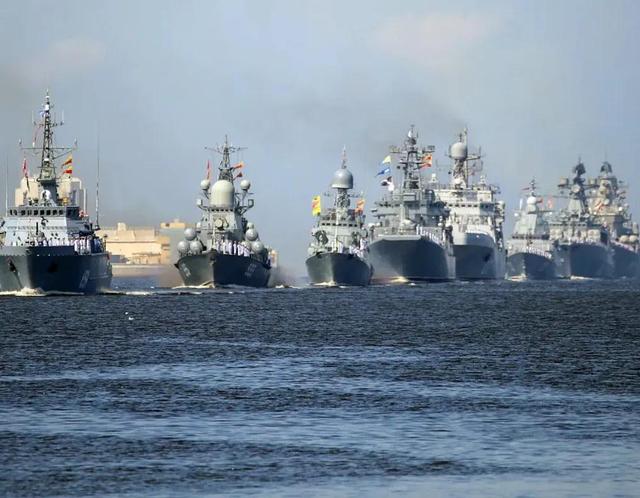
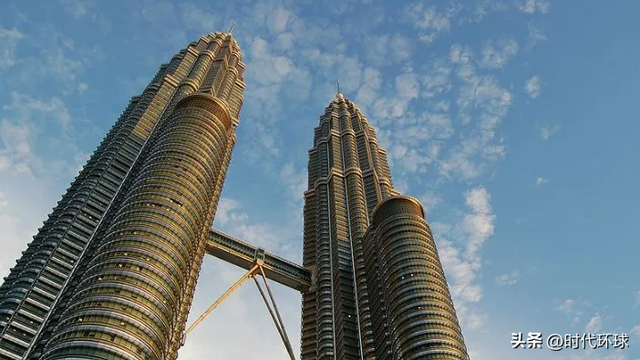
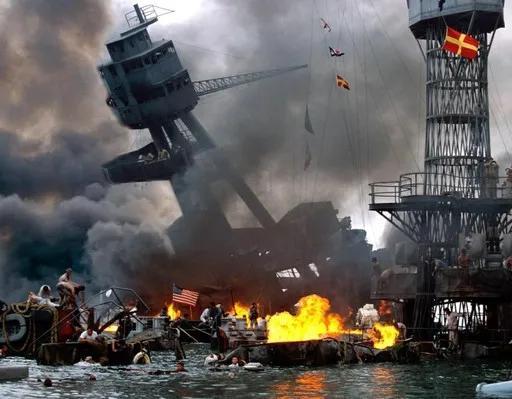
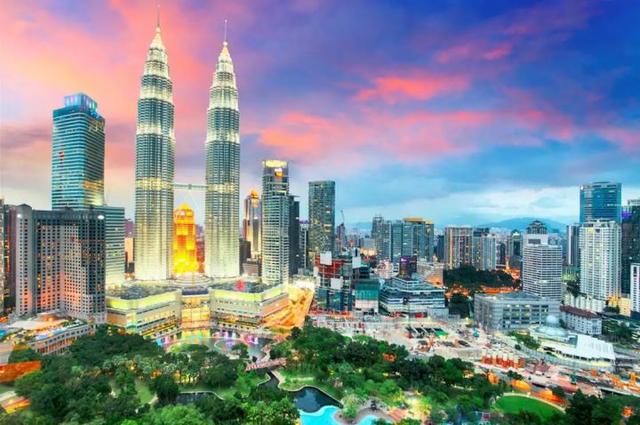


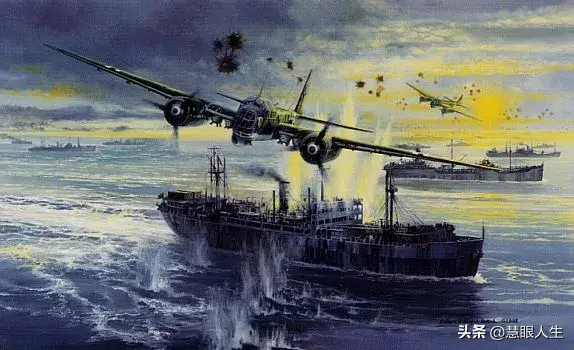











评论